Outside the city of Rechovot, there is a secular Kibbutz that bears the unique name, “Kibbutz Nen.” At one point, the kibbutz gained a certain measure of notoriety, which was attributable to one of its residents – the baker. Actually, it was a certain product of his that had gained renown. This baker was known for his yeast cake a most popular item whose recipe was a closely guarded secret for years.
Eventually, the baker passed on. His surviving relatives decided that the time had come to finally reveal the much sought-after recipe. And so they broadcast a public announcement, informing the greater community of how they could discover the secret ingredients. The recipe, they declared, was “published” in one particular place… etched onto the matzeivah (tombstone) of the dear departed. Anyone who wished had merely to journey to the cemetery, pay their grandfather a visit, and was free to copy down the recipe.
The announcement concluded with the following sentiment regarding the departed: “It is hoped, in this way, that his memory will be preserved.”
While obviously not the optimal use of the institution known as “matzeivah,” R’ Yitzchak Zilberstein – who relates the above account in his sefer Barchi Nafshi (Bamidbar 11:8) – notes that something quite telling can be gleaned from this unusual incident. Even those who are unfortunately distanced from their faith nevertheless seem to possess some instinctive knowledge of the concept of “hasharas hanefesh” (immortality of the soul), even if manifested in an imperfect way. At the very least, we often see that they strongly desire that something – which they term “memory” – of the individual remains even after his passing.
What, indeed, is the true purpose and function of the matzeivah in the Torah’s view? Is it merely a practical or sentimental convention, or does it perhaps possess deeper meaning?
Actually, there is a rich body of Torah literature that illuminates this topic. An exhaustive treatment of this broad and fascinating subject is well beyond the scope of this particular forum. (For more elaboration, see The Neshamah Should Have an Aliyah, pp. 107-110, upon which much of the following is based.) Here we shall attempt to at least touch upon some of the main points and ideas. We shall see, as well, how the matter relates to a key incident in this week’s parshah.
More than Just a Memorial
One of the most revealing aspects of the matzeivah, perhaps, is the issue of its name. This item is actually referred to by different titles in various sources. As we shall see, each of these titles sheds more light on the underlying facets of the tombstone.
The Navi (Yechezkel 39:15) refers to the tombstone by the name “tziyon,” which means “marker.” This title does reflect a practical aspect, as it serves a halachic function. Kohanim (priests) are commanded to retain a state of ritual purity, which is endangered when in
proximity to human remains. Thus, the “tziyon” serves the purpose of warning them to steer clear of the environs.
But in addition to warding away the kohanim, the marker actually serves as a vehicle to draw others near. That is, explains the Kesav Sofer, the tombstone informs the public that here is an optimal place for prayer.
For such is the nature of the resting place of a tzaddik (righteous individual), as evidenced from this week’s parshah. Describing the arrival of the spies in the Land, the passuk curiously shifts from plural to singular form: וַיַּעֲלוּ בַנֶּגֶב וַיָּבֹא עַד־חֶבְרוֹן – “And they ascended through the Negev region, and he came to Chevron” (Bamidbar 13:22). The intimation is that only a single individual journeyed to Chevron. Rashi identifies the visitor as Kaleiv, who travelled to Chevron to pray by the graves of the Avos (Patriarchs).
Present and Future
Another name for the tombstone appears in the Mishnah, which uses a most interesting term. The issue under discussion involves a case whereby money was designated to finance a burial, but it was discovered that there was a surplus. What should be done with the leftover funds? The Mishnah states (Shekalim 2:5):
מוֹתַר הַמֵּת בּוֹנִין לוֹ נֶפֶשׁ עַל קִבְרוֹ.
“The surplus of (funds designated for) the deceased should be used to build a “nefesh” (monument) by his gravesite.”
The word “nefesh,” of course, literally means “soul.” The Gesher Hachayim (and others) explain that referring to the tombstone as such speaks to another profound aspect of this institution – namely, that it serves as a form of resting area not only for the physical remains, but for a facet of the soul as well. Kabbalistic literature reports that the immortal soul is comprised of various facets (such as neshamah, ru’ach and nefesh). And while some of these travel to the Celestial realms, the facet known as “nefesh” remains to hover by the site of the grave. Conferring the title “nefesh” on the tombstone thus reflects this reality.
And, of course, there is the title “matzeivah,” which is how it is characterized by the Torah itself. As the passuk states regarding the tomb of Rachel Imeinu: וַיַּצֵּב יַעֲקֹב מַצֵּבָה עַל־קְבֻרָתָהּ הִוא מַצֶּבֶת קְבֻרַת־רָחֵל עַד־הַיּוֹם – “And Ya’akov set up a matzeivah by her grave; this is the monument of Rachel’s burial until this day” (Bereishis 35:20). This term, asserts the Maharam Shik, derives from the root נצב , which literally means “standing” and implies a sense of permanence. In this way, he explains, the name “matzeivah” provides the relatives of the departed with a measure of comfort and hope. It conveys this message in a somewhat ironic way, by emphasizing and reminding them of the permanence of the situation. Not that, chas v’Shalom, their relative is forever lost, for we are obviously firm in our belief of the eventual techiyas hameisim (resurrection of the dead). Rather, it is this very aspect that is reflected in the term matzeivah. That is, it reminds the relatives that not only does the soul exist forever, but even the bodily remains retain a quality of permanence. For one day, this very body will be reunited with its soul and rise and live once again.







